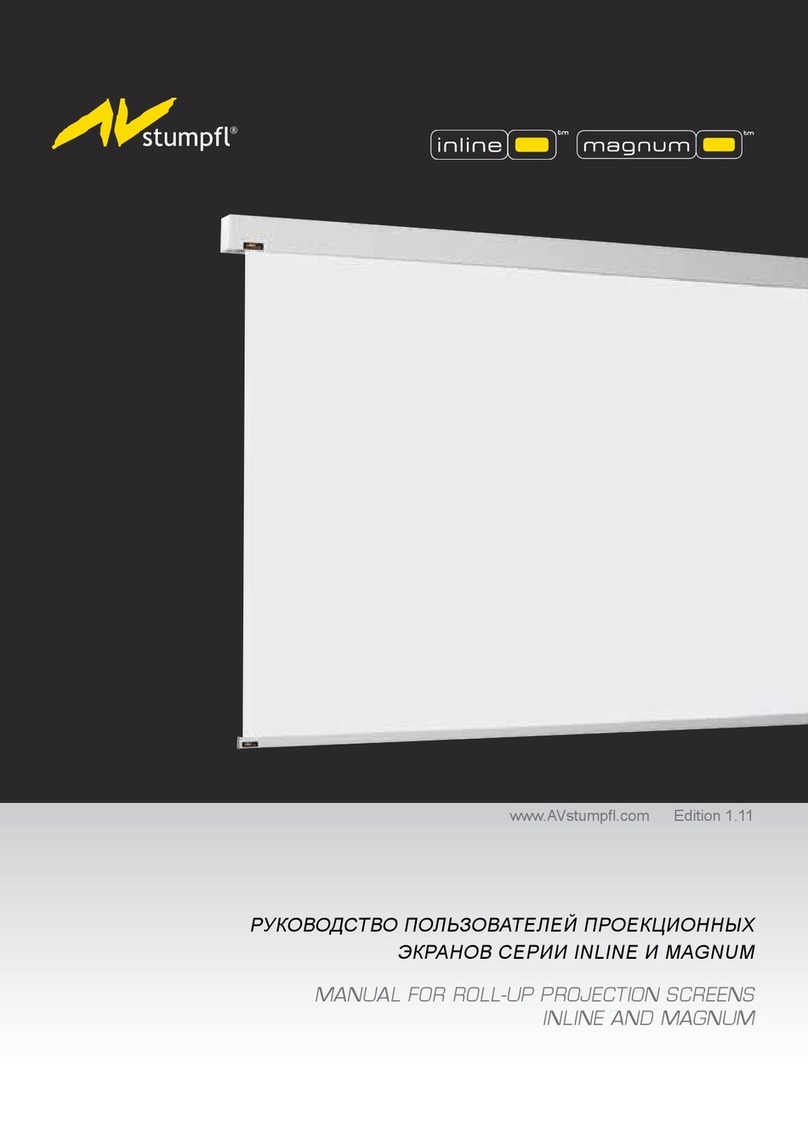Elektron Technology MPS II User manual

© 2014 Elektron Technology UK Ltd.
MPS II Manual

MPS II User Manual
The MPS II is a world leader in macular pigment density measurement
by Elektron Technology UK Ltd.

All rights reserved. No parts of this work may be reproduced in any form or by any means - graphic, electronic, or
mechanical, including photocopying, recording, taping, or information storage and retrieval systems - without the
written permission of the publisher.
Products that are referred to in this document maybe either trademarks and/or registered trademarks of the
respective owners. The publisher and the author make no claim to these trademarks.
While every precaution has been taken in the preparation of this document, the publisher and the author
assume no responsibilityfor errors or omissions, or for damages resulting from the use of information
contained in this document or from the use of programs and source code that may accompany it. In no event
shall the publisher and the author be liable for any loss of profit or any other commercial damage caused or
alleged to have been caused directly or indirectly bythis document.
Printed: October 2014
MPS II Manual
© 2014 Elektron Technology UK Ltd.

MPS II Manual4
© 2014 Elektron Technology UK Ltd.
Table of Contents
Part I MPS II 6
................................................................................................................................... 61 Introduction
.......................................................................................................................................................... 7Elektron Company notices
......................................................................................................................................................... 8Revision History
......................................................................................................................................................... 9Important w arnings
......................................................................................................................................................... 10Explanation of symbols used in manual and on instrument
......................................................................................................................................................... 11Database w arning
......................................................................................................................................................... 12Acknow ledgements
................................................................................................................................... 132 How to use this manual
................................................................................................................................... 143 An Introduction to Macular Pigment
................................................................................................................................... 154 MPS II testing
.......................................................................................................................................................... 16MPS II target
.......................................................................................................................................................... 17Testing strategy
.......................................................................................................................................................... 18Standard test
.......................................................................................................................................................... 19Detailed Test Mode
.......................................................................................................................................................... 20Explanation of terms
Part II Installation 21
Part III Test Modes Best Practice 23
Part IV Selecting a Patient 25
................................................................................................................................... 261 Create a New Patient
................................................................................................................................... 282 Select Existing Patient
Part V Standard Test Mode 29
................................................................................................................................... 301 Standard Test - Summary
................................................................................................................................... 312 Standard Test - Sequence
................................................................................................................................... 343 Patient Instructions
Part VI Detailed Test Mode 34
................................................................................................................................... 351 Detailed Test - Summary
................................................................................................................................... 362 Detailed Test - Sequence
................................................................................................................................... 403 Patient Instructions Peripheral
................................................................................................................................... 404 Graph Estimate
................................................................................................................................... 415 Test Reports
Part VII Viewing Previous Record Data 45
Part VIII Configuration Wizard 46
Part IX Appendix 1 - MPS II Installation 49
Part X Appendix 2 - Software Installation 51

5Contents
5
© 2014 Elektron Technology UK Ltd.
................................................................................................................................... 521 Installation on a new PC
................................................................................................................................... 532 Updating an existing installation
................................................................................................................................... 543 Starting the program
Part XI Appendix 3 - Confidence Limits 55
Part XII Appendix 4 - Example data 57
Part XIII Appendix 5 - Technical Specification 59
Part XIV Appendix 6 - Maintenance and Warranty 61
................................................................................................................................... 611 Regular Inspection
................................................................................................................................... 612 Maintenance
................................................................................................................................... 613 Cleaning
................................................................................................................................... 624 Preventative maintenance
................................................................................................................................... 625 Replacement parts
................................................................................................................................... 636 Spare lenses
................................................................................................................................... 637 Repairs and Recalibration
................................................................................................................................... 638 Warranty
Part XV Appendix 7 - Troubleshooting 64
Part XVI Appendix 8 - Software License Agreement 65
Index 0

MPS II Manual6
© 2014 Elektron Technology UK Ltd.
1 MPS II
www.elektron-healthcare.com
1.1 Introduction
The MPS II / MPS 9000 must be used in accordance with the operating instructions. Please read the
instructions before attempting operation.
The instructions in this manual are to be viewed as an accompaniment to correct training on this
equipment.
The results of a test are only to be analysed by a suitable qualified person, and it is the responsibility
of the practice manager/owner to ensure that only suitably trained personnel are operating this
equipment.
Contact your sales agent for details of on-site training.

MPS II 7
© 2014 Elektron Technology UK Ltd.
1.1.1 Elektron Company notices
The information contained in this manual is subject to change without notice.
All rights reserved. Reproduction, translation, or adaptation of this manual without prior written
permission of Elektron Technology UK Ltd. is prohibited, except as allowed under copyright laws.
The only warranties for Elektron Technology UK Ltd. products and services are set forth in the
express warranty statements accompanying such products and services. Nothing herein should be
construed as constituting an additional warranty.
Elektron Technology UK Ltd. shall not be liable for technical or editorial errors or omissions
contained herein.

MPS II Manual8
© 2014 Elektron Technology UK Ltd.
1.1.1.1 Revision History
Release
Date
Change
Version 1.00
24/6/13
New version for V5 software
Version 1.1
03/08/13
Spelling and grammatical corrections and some formatting changes
Version 1.2
30/08/13
Added graph estimate information in Detailed Mode test
Version 1.3
2/14
Information updated
Version 1.4
30/6/14
Information updated and some installation information added
Version 1.5
1/10/14
Information regarding installation added.

MPS II 9
© 2014 Elektron Technology UK Ltd.
1.1.1.2 Important warnings
WARNING
This unit must be
connected to an
earthed mains supply
WARNING
Hazardous voltages are
present inside the
electrical enclosures of
this unit. No user-
serviceable parts inside
WARNING
This equipment is not
suitable for use in an
oxygen rich
environment
WARNING
This equipment should
be kept dry at all times

MPS II Manual10
© 2014 Elektron Technology UK Ltd.
1.1.1.3 Explanation of symbols used in manual and on instrument
Definition of symbols used in the manual and on the instrument.
WARNING
Consult manual
WEEE Directive
0
1
Power Off (0)
Power On (1)
Type B Applied Part
Hazardous voltage
CE mark
USB
Protective earth
AC Mains

MPS II 11
© 2014 Elektron Technology UK Ltd.
1.1.1.4 Database warning
To reduce the possibility of loss in the unlikely event of computer hard disk failure, it is strongly
recommended that the database of patient records be backed up regularly either on to a USB
memory stick or other suitable removable media and kept off-site or in a suitable safe location.
The configuration wizard (shown below) allows for the backup interval and location to be set.
The default location is C:\users\login_name\ but can be any location on the PC.
It is good practice that a backup copy of the database is kept off-site or in a suitable fire safe
location.
The database used in the MPS II software is based on the PostgreSQL database program.
The database structure ensures that each patient has an entry (called a record) in the database.
The patient’s record holds all of their contact details and also a copy of every test they complete
along
with risk factor information and any supplementation recommended.
The database has inbuilt security to stop unauthorised access to the information contained within.
Every time a new MP test is performed the results (if saved) are attached to the patient’s “record”
card.

MPS II Manual12
© 2014 Elektron Technology UK Ltd.
1.1.1.5 Acknowledgements
Microsoft, Windows, Windows 7TM and Windows 8TM are registered trademarks of Microsoft
Corporation.
Elektron Technology UK Ltd. continuously improves the design processes of its equipment to
minimize the negative impact on the environment and the communities in which the equipment is
manufactured, shipped, and used.
This symbol on the product or on its packaging indicates that to preserve the environment, this
product must be recycled after its useful life as required by law and must not be disposed of with
your household waste. It is your responsibility to dispose of your waste electrical and electronic
equipment by handing it over to a designated collection point for the proper recycling of such
equipment. The separate collection and recycling of your waste equipment at the time of disposal will
help to conserve natural resources and ensure that it is recycled in a manner that protects human
health and the environment. For more information about the authorized collection location nearest to
you, please contact your local city office, your household waste disposal service or the agent from
whom you purchased the product.

MPS II 13
© 2014 Elektron Technology UK Ltd.
1.2 How to use this manual
This manual is written for use with the MPS II Macular Pigment Screener.
Throughout the manual there are references to MPS II or MPS9000; both of these refer to the stand-
alone MPS II unit which has the manufacturer’s reference number MPS9000 or MPS1000.
Throughout this manual there will be references to laptop or PC where PC stands for Personal
Computer.
It does not matter which computer you have as the software is the same.
If you have a laptop with touch pad or external mouse connected, you need to move the on-screen
arrow cursor over the button/item you want to select and then press the left hand button.
In the event of software upgrades, up to date operational instructions will be installed at the same
time as the software.
Updates of the software can be obtained from your agent (when available).
Some of the screen shots in this manual may be from different versions of software and may differ
slightly from the software installed on your machine.
The information in this manual was correct at the time of publishing.
It is important that all of the literature and software supplied with the MPS II is kept in a safe place.
Use of the Software
Throughout the software there are visual clues to help you operate the software and perform testing.
The on-screen controls will be colour coded to help you.
Greyed out if they cannot be used.
Blue if they are available for use and
Green if they are the next button you should press to progress.

MPS II Manual14
© 2014 Elektron Technology UK Ltd.
1.3 An Introduction to Macular Pigment
Age-related Macular Degeneration (AMD) is the most common cause of vision loss in people over 50
and its prevalence increases with age. There is a growing awareness of the disease, the need to
measure the risk of getting it and how to take preventative action.
As the World's population ages, the condition is expected to become more prevalent creating a
heavy financial burden on health care services.
It is safe to say that if the entire population lived to 100 years, we would all exhibit varying levels of
macular degeneration.
Given that there is no cure for AMD, it is vital to prevent the disease for as long as possible through
diet, lifestyle and optimising Macular Pigment Levels – the internal sunscreen for the eyes.
The macula is the central and most sensitive part of the retina at the back of the eye and macular
pigment acts as an antioxidant that protects the retina from the potentially damaging effects of blue
light – if the density of this pigment is reduced then the retina is made more vulnerable and more
likely to gradually deteriorate. By catching those with low levels of macular pigment, the MPS II
makes it possible to reduce their risk of long-term vision loss.
People with AMD experience severely distorted vision and find it very hard to read and recognise
faces.
Eventually the condition can lead to total blindness.
The density of the macular pigment has been shown to be linked to diet and to other lifestyle factors,
including smoking.
Normal Amsler Grid Amsler grid with AMD
The scientifically proven technique for measuring the density of macular pigment, heterochromatic
flicker photometry (HFP), has been available for over 30 years. The new MPS II uses the same
technology, but takes it to the next stage by refining it and making it available in a more accessible
package thanks to advances in LED lighting.
The approach adopted by the MPS II is far easier for patients to use than earlier versions of the
technology. Unlike conventional methods, where observers have to set the point where flicker
disappears (or minimised), the measurement consists of a series of button presses in response to
the onset of flicker, which makes it far easier for the subject to take the test and for the Optical
Practitioner to accurately determine the flicker thresholds and optical density.
Visit our Website for more up to date information regarding clinical papers and developments in the
Prevention, Detection and Treatment of AMD.
Elektron healthcare Website

MPS II 15
© 2014 Elektron Technology UK Ltd.
1.4 MPS II testing
The MPS II is a computerised instrument for measuring a subject’s Macular Pigment Optical
Density.
It's purpose is to identify patients at risk of developing early stage AMD.
The MPS II uses low intensity light of specific wavelengths at calibrated intensities to gauge a
patient’s heterochromatic flicker response.
The patient looks into the instrument at the stimulus light and is asked to press a button when they
see the light flicker.
The target background luminance is maintained at 250cdm-2 to significantly reduce detection by rods
or short-wave cones.
The MPS II has an internal microprocessor used to control the light intensities and the test program
sequence.
For full operation, the unit is connected to,and controlled from, a computer running the Microsoft
Windows8™, or Windows 8™ operating system.
The MPS II is easy to use and does not require advanced computer literacy for its operation.
Once installed, you will immediately have the capability to carry out routine macular screening
examinations on your patients.
From then on, your confidence with the unit will grow with every use and you will rapidly discover the
simplicity of operation and the ease of obtaining valuable and accurate macular pigment data.
A powerful database is included in the software that stores the macular pigment results alongside the
patient details. using the database, reports can be generated to monitor the patient’s progress after
supplementation.

MPS II Manual16
© 2014 Elektron Technology UK Ltd.
1.4.1 MPS II target
The MPS II target is the most important part of the unit and the lens and optics of the instrument
should be kept clean and free from dust and debris by using the supplied dust cover when the unit is
not in use.
The pictures below shows the view into the eyepiece –
Three circles are visible on a plain white background.
During a test,the central (smaller) target will light a blue-green colour and it is here flicker will be
seen.
The larger circles (either side) are fixation targets used for the peripheral test in the Detailed Mode.
The peripheral fixation targets light up red and the patient is instructed to look at them during
peripheral testing whilst observing the central target through the side of the eye (not required in
Standard mode).
It is important that the patient maintains fixation on the correct target during peripheral testing. If
either of the red peripheral fixation targets is illuminated, then the patient should fixate on these. If
neither of them is illuminated, the patient should look directly at the central target.
In both cases,the response to flicker in the central targets should be the same.

MPS II 17
© 2014 Elektron Technology UK Ltd.
1.4.2 Testing strategy
Since MP lies within the foveal region other media changes, e.g. lens yellowing, will not affect the
MP value.
Note that the initial blue/green ratio is pre-set by taking the age of the subject into account. The older
the subject the further to the right the start point.
If the subject has been fitted with an Intra-Ocular Lens,the eye may then appear much younger so
the software automatically assumes an age of 20 when the IOL button has been ticked (patient’s
form).
The MPS II first measures the patient's flicker sensitivity. This is used to normalise each subject as
far as possible so that the starting flicker frequency is close to 30Hz. Some subjects still lie outside
this normalisation process. This affects the shape of the curve and hence the accuracy of
measurement. Too high a sensitivity and the curve starts at a high value (> 30 Hz) and remains
shallow. Too low a value, and the curve starts at a low value (< 30 Hz) and is too deep (sometimes
below 5Hz) which may halt the run. Optimum sensitivity occurs when the minimum value falls
between 20 Hz and 15 Hz
In subjects with diabetic media yellowing,the error will be higher because their media appears older.
When lights are different in colour, it is difficult to say whether or not they are of equal intensity or
luminance.
This device uses the well-known technique of heterochromatic flicker photometry (HFP) to identify the
equal-luminance point of two flickering lights of different wavelengths.
Macular pigment absorbs selectively in the blue region of the visible spectrum, at 460nm, and is
present only in the central 8 degrees of vision.
HFP is performed for central fixation where macular pigment is maximal.
A constant white background illuminance is used; blue and green light are alternately flickered. The
blue light is chosen to match the absorbance of the macular.
In the MPS II,the equal luminance points are obtained by presenting the two lights at a series of
different intensity ratios. The flicker frequency starts at a high rate where flicker cannot be detected
(target appears a steady blue-green colour) and, for each blue-green intensity ratio, the flicker rate
slowly reduces until the patient sees the flicker - at which point they press the response button.
This process is repeated at different intensities to obtain the graph. The curve will have a minimum
which corresponds to the equal luminance point for the blue/green target. The software calculates the
MP value based on this minimum and the patient’s age.

MPS II Manual18
© 2014 Elektron Technology UK Ltd.
1.4.3 Standard test
The latest version of the MPS II software implements the Standard mode algorithm from version 4.
Developed by one of the original inventors of the instrument, the algorithm interprets the validity of
screening results.
Previous versions of the software have relied on the operator making subjective judgements on the
result’s validity. The new algorithm relieves the operator of this responsibility by automatically
interpreting the results. Of course the Detailed mode interface remains for the testing of diabetics,
clinical research and teaching, but most will find the ease of use in Standard mode applicable to
most test cases. A simple button click toggles between the two modes (shown below, for
comparison) –
The Standard mode contains a subset of the Detailed mode controls.
The macular index is calculated from the patient’s age and the central run (a peripheral run is not
needed).
The algorithm looks at the patient’s response to the test and analyses the shape of the graph and
the test values.
There are three possible outcomes, clearly displayed below the graph (accept, caution and reject) -
see Appendix 3 - Confidence limits.
In most cases, the results will be accepted. In a few instances the results will be unacceptable (and
the program ensures these cannot be saved as a valid result). When the Standard mode algorithm
produces a low, but acceptable result, the final decision is left to the operator.

MPS II 19
© 2014 Elektron Technology UK Ltd.
1.4.4 Detailed Test Mode
The Detailed Mode is used for patients where the Standard Mode is not suitable, people with
diabetes for example.
For this test, two measurements are taken, one with the patient looking directly at the stimulus
target (using the central region of the macular) with the light from the target passing THROUGH their
macular pigment as in standard mode
For the second phase of the test, the patient fixates peripherally on a point 8 to the side of the
stimulus light
(so they are viewing the stimulus where macular pigment is known to be absent).
The patient responds to the stimulus flicker as before and once the test is finished, the central and
peripheral results are then used to determine the patient’s Macular Pigment Optical Density.
This is done by working out the ratio of the amount of blue light absorbed in the central region
compared with the peripheral region.
The greater the density, the more blue light is absorbed.

MPS II Manual20
© 2014 Elektron Technology UK Ltd.
1.4.5 Explanation of terms
There are three possible results given by the MPS II Software depending on what test you are
running.
The Standard test will give an Age estimate.
The Detailed Mode test will give an Age Estimate, an Absolute result and can also give a Graph
Adjusted result under operator control.
These three terms are explained below.
MP-Estimate
This means that the peripheral part of the test has been estimated using the patient’s age. The
patient's MP level has been calculated from their central test result and the estimated peripheral. It is
not an Absolute measurement.
MP-Absolute
This is the full measurement where both parts of the test are undertaken by the patient and is the full
measurement. There is no estimating in it. This test is necessary for patients with eye diseases or
diabetes where we cannot estimate the peripheral result using their age. (diabetics in particular have
different age related results)
To calculate an Absolute measurement we need to perform a central test (where patient looks
directly at the target) and then a peripheral test (where the patient looks at the red fixation point) and
by comparing these 2 results we work out the patient’s MP level.
MP-Graph Adjusted
This is where the Absolute result of a detailed test is changed by moving the minimum point on the
graph.
For example, if the patient’s central test curve looked like the picture below, the software would pick
the right hand point (arrowed) as the minimum, but you can see that there are 2 points at exactly the
same point on the Y axis. The operator can move to the other point to see what affect it has on their
MP level result. (in this example, the change will be minimal).
This new MP value is recorded alongside the calculated result in the database as Adjusted as the
operator has changed the result that the software originally calculated.
Table of contents
Popular Projection Screen manuals by other brands
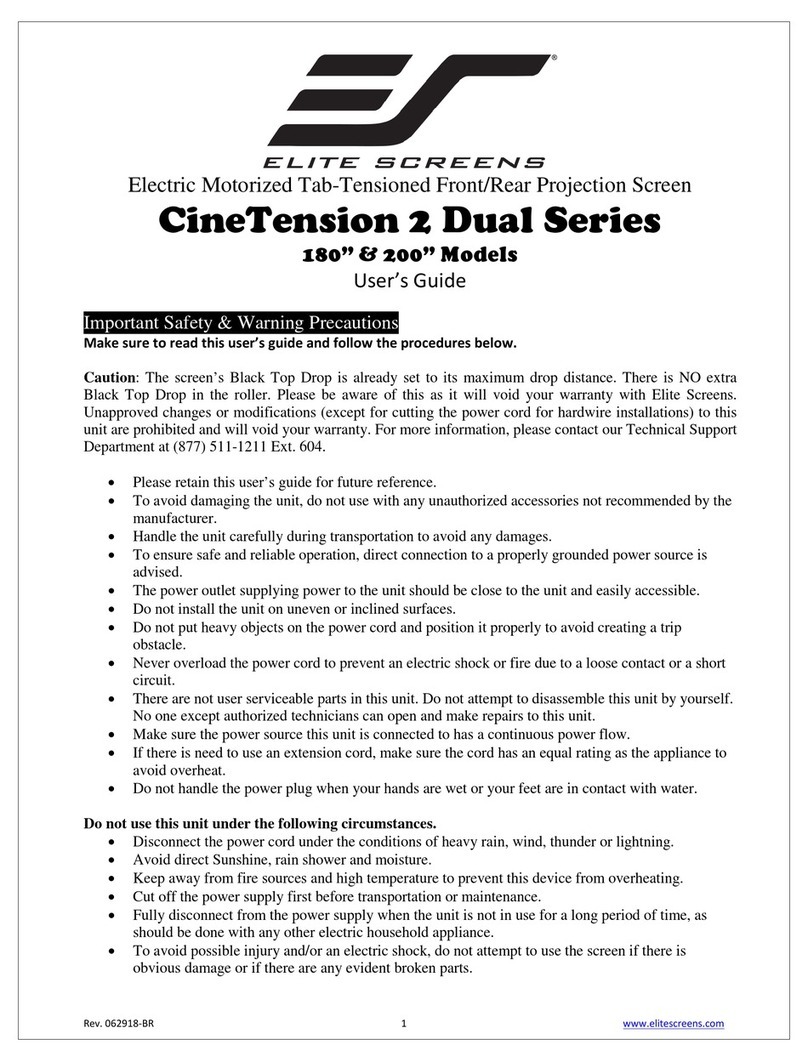
Elite Screens
Elite Screens CineTension 2 Dual Series user guide
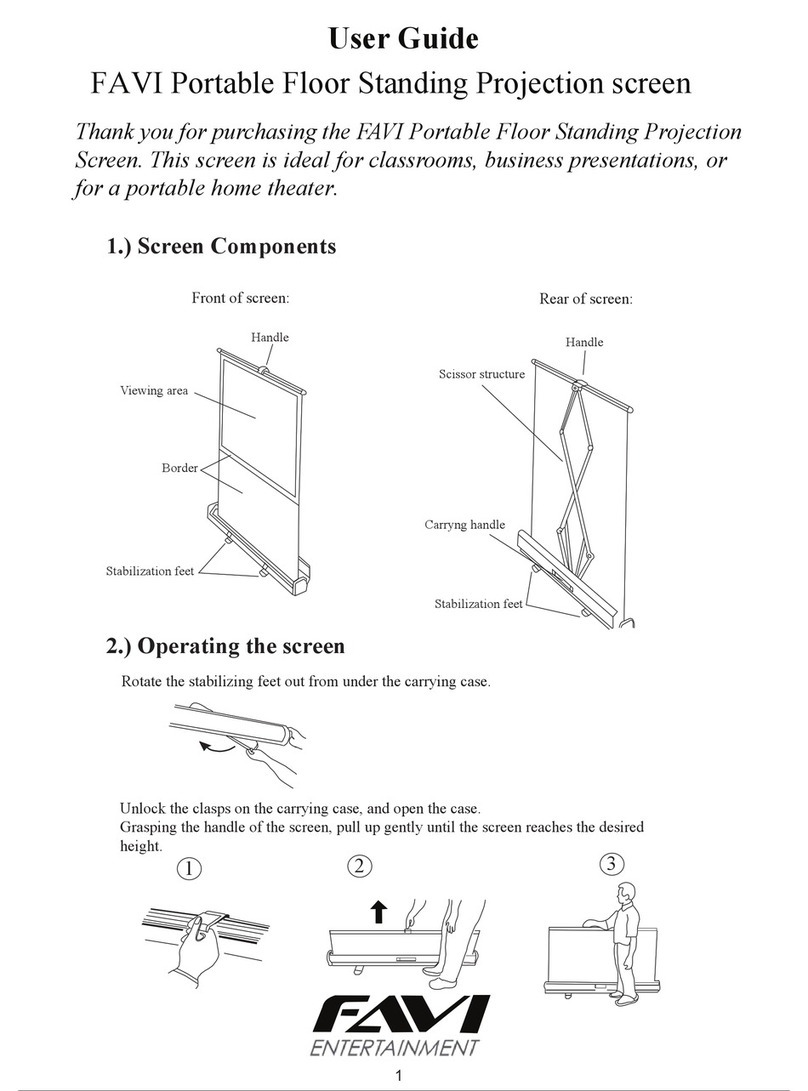
FAVI
FAVI FAVI Portable Floor Standing Projection... user guide
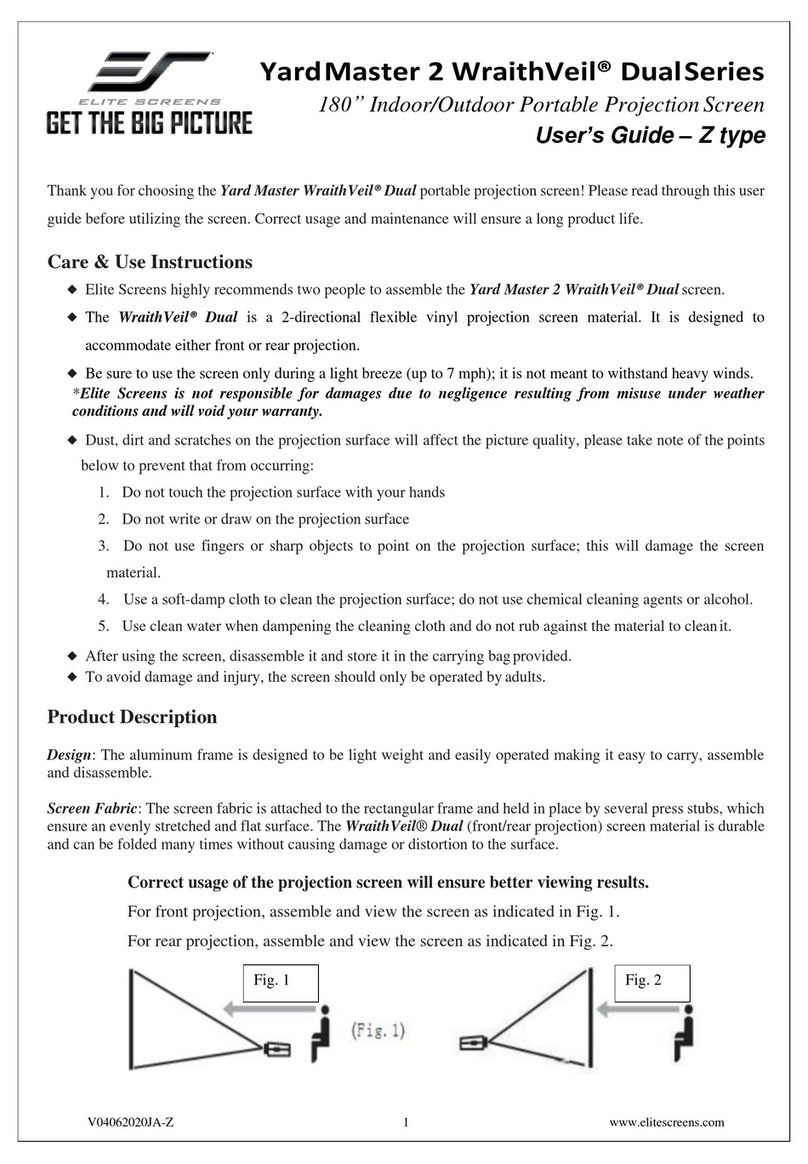
Elite Screens
Elite Screens YardMaster 2 WraithVeil Dual Series user guide
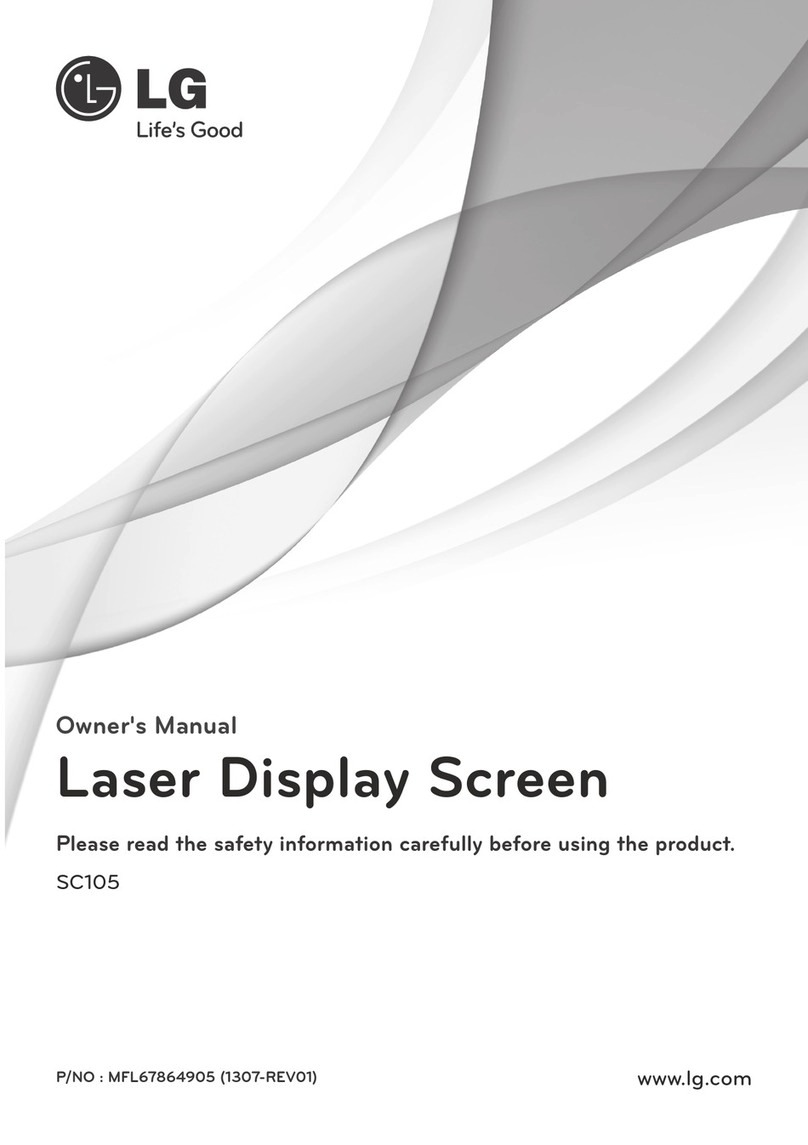
LG
LG SC105 owner's manual
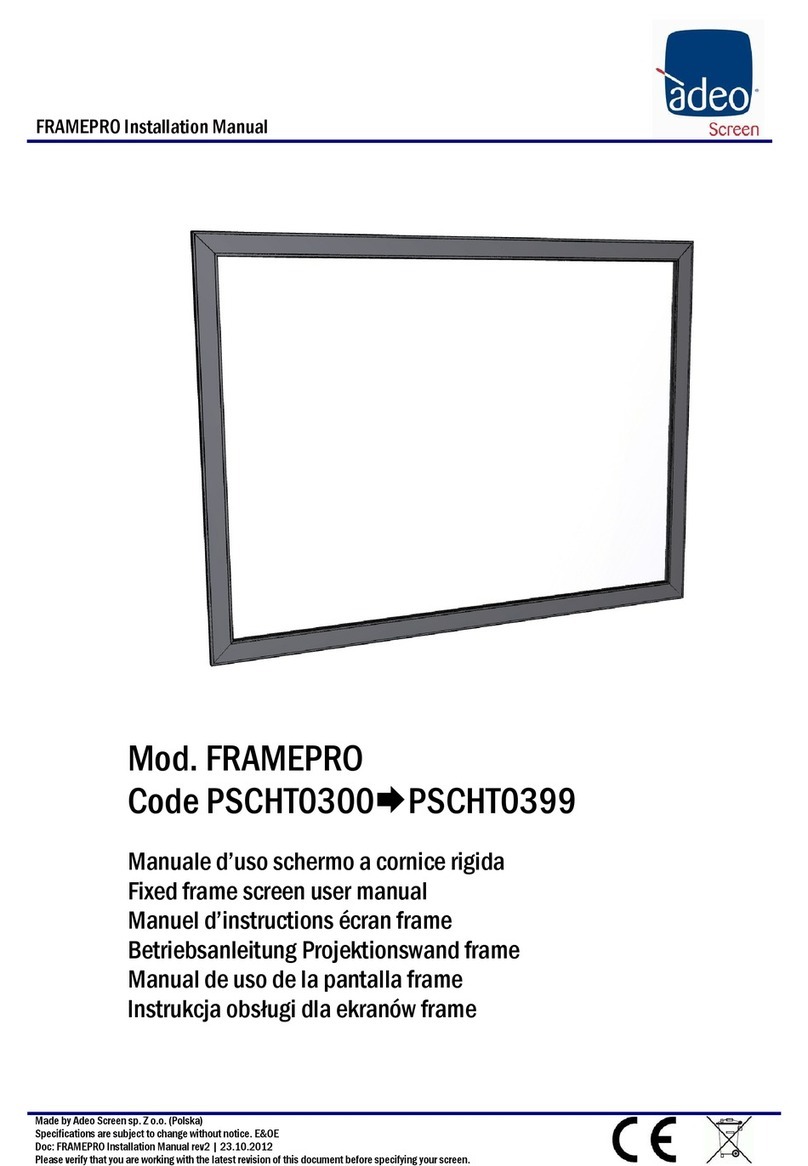
ADEO SCREEN
ADEO SCREEN FRAMEPRO installation manual

Elite Screens
Elite Screens Osprey Tension Dual Series user guide
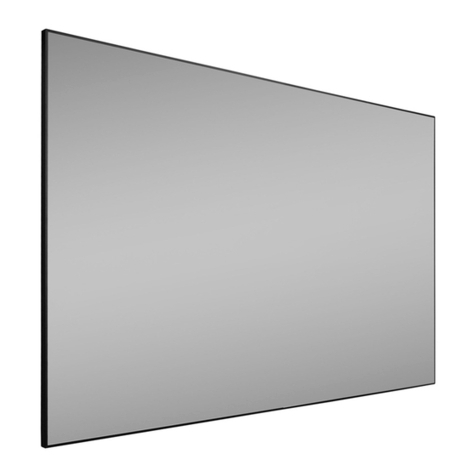
Grandview
Grandview Edge R3 PE-L Series Installation & user manual

Elite Screens
Elite Screens Manual SRM Pro Series user guide
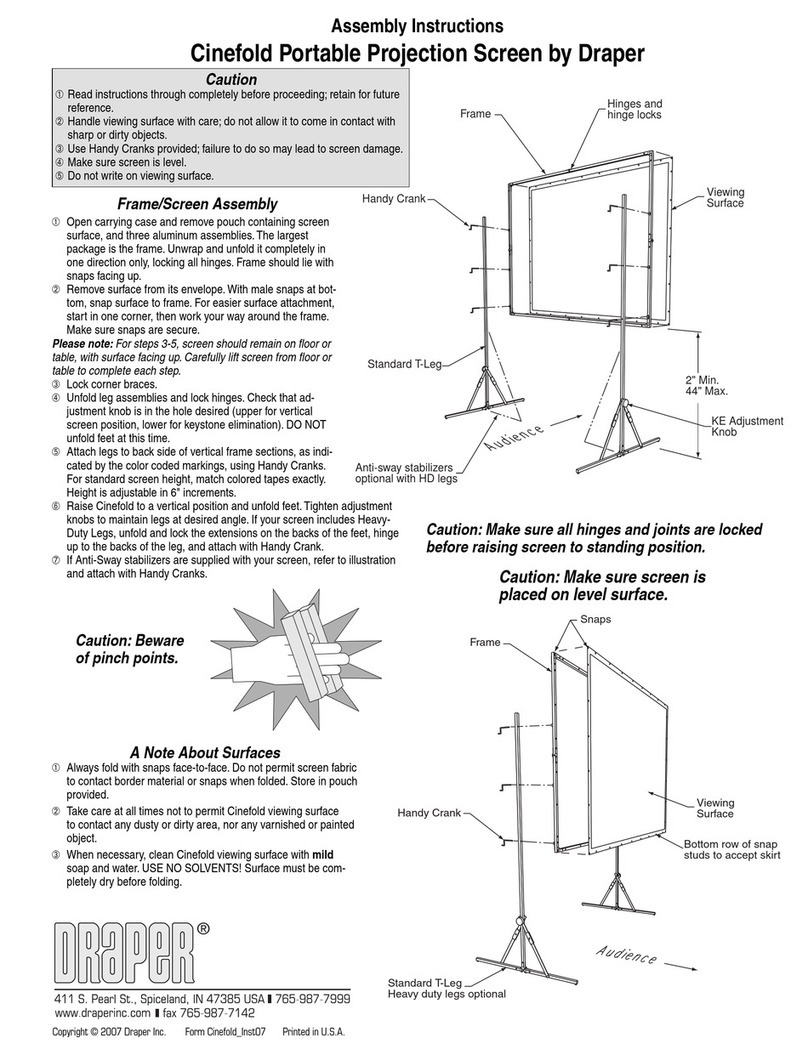
Draper
Draper Cinefold Assembly instructions

Screen Innovations
Screen Innovations 1 SERIES FIXED owner's manual
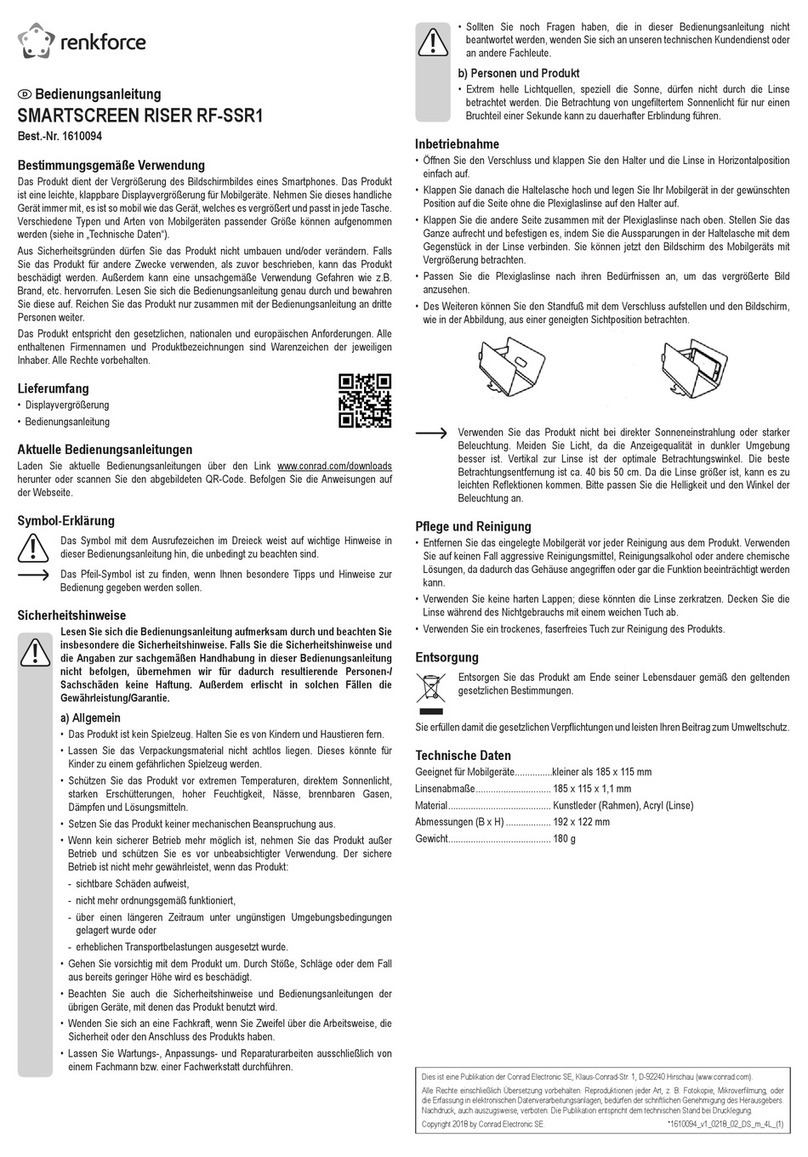
Renkforce
Renkforce RF-SSR1 operating instructions

Da-Lite
Da-Lite TENSIONED HORIZON ELECTROL Instruction book

